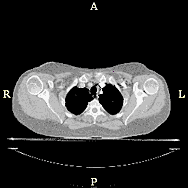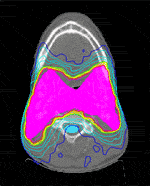Biomedical Physics Program
Radiation Oncology

Radiation Therapy is involved with the use of radiation (mainly gamma and x-rays) for the treatment of malignant tumors. The medical physicist plays a pivotal role in ensuring that the right radiation dose is delivered to the patient. There have been several recent technological developments in the field such as 3D conformal radiation therapy and intensity modulated radiation therapy (IMRT).
IMRT is designed to address a major limitation of conventionally delivered radiotherapy: its inability to restrict the treatment beam to the tumor-bearing tissue. Unlike conventional treatment, with IMRT, the intensity of radiation is made to vary across the beam. Inverse planning algorithms are used to determine optimal intensity-modulation. A dynamic multileaf collimator is used to sweep opposing pairs of tungsten leaves across the field.
In 3D conformal radiation therapy, the prescribed dose is shaped to match the 3D target volume of cancer cells. Computers are also used to generate beam’s eye-view (BEV) images that present a patient’s anatomy as it would appear to a viewer located at the radiation source. BEV images are used to aid in determining which x-ray beam orientation would yield the best view of cancer cells without irradiating too much normal tissue.



Int J Radiat Oncol Biol Phys 2001;
51:880-914